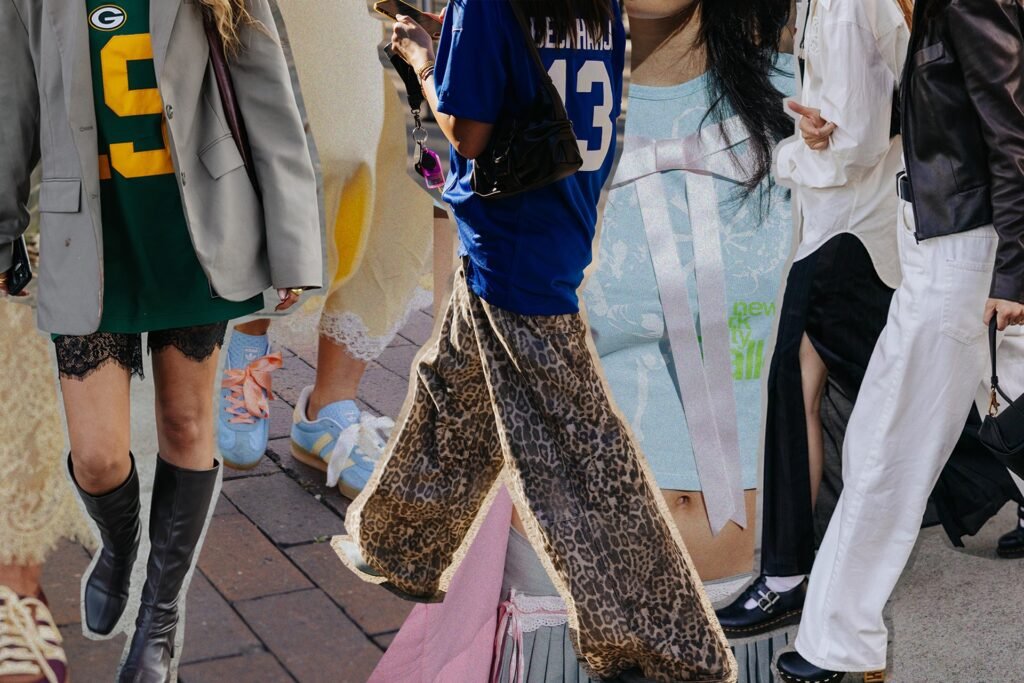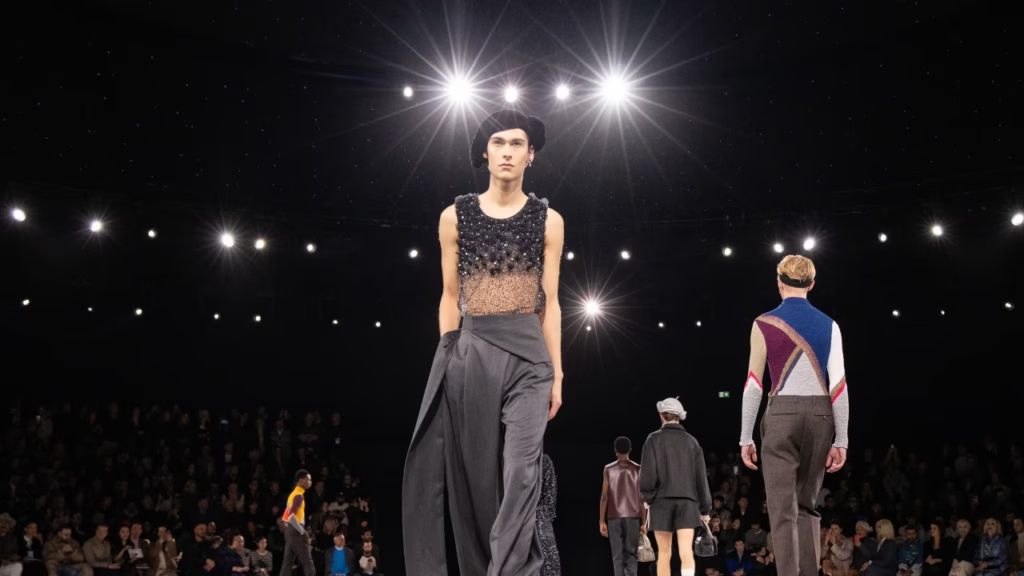The vibe economy in fashion is transforming how people express themselves. It’s no longer about blindly following fast-changing micro-trends. Instead, fashion lovers are leaning into authentic, lifestyle-driven aesthetics that reflect who they really are. This cultural shift is not only reshaping wardrobes but also redefining identity, creativity, and self-expression across the globe.
In this article, we’ll break down what the “vibe economy” means, why micro-trends are falling out of favor, and how people are now curating personal aesthetics based on lifestyle, values, and emotional resonance — not just fleeting internet fame.
What Is the Vibe Economy in Fashion?
The “vibe economy in fashion” refers to a growing movement where personal style is based more on feelings, moods, and lifestyles than following the latest trend on TikTok or Instagram. In simple words, it’s about dressing for how you feel, not how influencers tell you to look.
Rather than chasing after the “next big trend,” people are building long-term aesthetics that match their personality, values, hobbies, and even emotional states. Think of it like this:
- Instead of saying “I wear what’s trending this season,” someone in the vibe economy says, “I dress like a modern cottagecore librarian because that feels like me.”
The vibe economy is powered by personal storytelling, nostalgia, authenticity, and creative self-expression.
Why Micro-Trends Are Losing Power
Micro-trends—like “clean girl aesthetic,” “balletcore,” or “blokecore”—rise and fall at lightning speed. On platforms like TikTok, a fashion trend can blow up one week and disappear the next. This causes trend fatigue and confusion. People can’t keep up, nor do they want to anymore.
Here’s why micro-trends are dying out:
1. Sustainability Concerns
Consumers are becoming more aware of how harmful fast fashion is to the environment. Micro-trends encourage overconsumption. Buying a new outfit every week just to stay trendy is wasteful.
2. Identity Crisis
Jumping from one trend to another doesn’t help people build a true sense of personal style. It’s exhausting and often feels hollow.
3. Financial Pressure
Keeping up with every trend is expensive. People are now realizing it’s smarter to invest in timeless pieces that align with their long-term aesthetic.
4. The Return of Individualism
The internet is saturated with people looking the same. There’s a growing desire to stand out — not by copying a trend, but by creating a personal vibe.
Lifestyle Aesthetics: More Than Just Fashion

In the vibe economy, fashion is just one part of a larger lifestyle aesthetic. People don’t just want clothes; they want an entire vibe — something that feels like home.
These lifestyle aesthetics influence:
- Clothing choices
- Home décor
- Playlists
- Skincare and beauty
- Hobbies and interests
- Even coffee orders and grocery lists
Let’s explore a few popular lifestyle aesthetics that define the vibe economy in fashion:
1. Cottagecore
Inspired by rural life, vintage fashion, and nature. Think linen dresses, flower crowns, and slow living.
2. Dark Academia
A gothic, scholarly vibe with tweed blazers, turtlenecks, and literary references. It’s fashion meets poetry.
3. Coastal Grandma
Relaxed beachy outfits with lots of white, linen, and straw hats. It’s breezy, calm, and timeless.
4. Y2K Nostalgia
Some prefer bold colors, shiny fabrics, and early 2000s fashion. It reflects a playful, rebellious youth energy.
5. Soft Girl/Soft Boy
Pastels, plush textures, cute accessories — this vibe centers on innocence, sweetness, and self-love.
Each of these aesthetics isn’t just a style — it’s a lifestyle.
How Social Media Is Fueling the Vibe Economy
Ironically, the same platforms that created fast micro-trends are now helping the vibe economy grow.
TikTok and Pinterest: The New Mood Boards
People are no longer looking up “latest fashion trends.” Instead, they search for vibes — like “autumn aesthetic,” “witchy wardrobe,” or “forest fairycore.” These terms are emotional, not seasonal.
Long-Form Content > Flash Trends
Influencers who talk about their life, routine, or personal growth get more attention than those just pushing the latest product. Storytelling is powerful.
Outfit Repeating Is Cool Again
Creators proudly re-wear outfits. They show how one piece fits into multiple looks that align with their core vibe.
Brands Are Catching On — But Slowly
Fashion brands are starting to realize that they can’t just push trends anymore. Consumers want storytelling and deeper connections.
Here’s how smart brands are adapting to the vibe economy in fashion:
- Niche collections: Instead of seasonal trends, brands launch theme-based drops that match vibes like “romantic academia” or “urban minimalism.”
- Influencer alignment: Collaborations now focus on creators with cohesive aesthetics — not just big followings.
- Emphasis on quality: Since consumers want to invest in their long-term aesthetic, they’re choosing quality over quantity.
Building Your Own Vibe: A Simple Guide

Here’s how to embrace the vibe economy in fashion and build an authentic style you love:
1. Know Your Vibe
Ask yourself:
- What colors and textures make you feel at peace?
- What kind of music, movies, or places inspire you?
- What lifestyle do you want to lead?
2. Curate Inspiration
Use Pinterest or Instagram to collect mood boards that resonate. Don’t think about trends — think about how the visuals make you feel.
3. Audit Your Closet
Get rid of clothes that don’t match your vibe. Keep what aligns with your aesthetic, even if it’s not “trendy.”
4. Shop With Intention
Look for timeless pieces that express your personal story. Don’t be afraid to thrift or support slow fashion.
5. Live the Vibe
True vibe economy isn’t about just how you dress — it’s how you live. Decorate your room, build playlists, and explore hobbies that deepen your aesthetic.
Vibe Economy and Mental Health: A Surprising Connection
Many people are finding that aligning their fashion with their inner world improves their mental well-being. Here’s why:
- Stability: Instead of chasing trends, you build a consistent aesthetic that grounds you.
- Self-Expression: Your clothes become a form of art, reflecting your mood and identity.
- Confidence: Wearing what feels right naturally boosts self-esteem.
Conclusion: The Future of Fashion Is Feeling-Based
The vibe economy in fashion is more than a trend — it’s a cultural shift. It encourages authenticity, reduces overconsumption, and brings personal identity back into the spotlight.
As we move forward, we’ll see fewer viral trends and more long-term aesthetics rooted in lifestyle and emotion. It’s no longer about what’s popular — it’s about what feels like you.
So whether your vibe is dreamy cottagecore, sleek techwear, or retro vintage, the only real rule is this: be yourself, and dress like it.
Read Next – Longevity Retreats: A New Era of Wellness Travel






